Our first weekend in San Sebastián meant our group could sleep in a little later than usual. This was especially important because Professor Zabalbeascoa made it known that this would be the day to look our best if we wanted some great photo ops. After some necessary beauty sleep, we put on our best outfits, fixed our hair, and got on the bus that would take us to Zarautz, home of Talai Berri, the Txakoli Winery.
As someone who loves the countryside and breathtaking views, I was very excited for this trip. After seeing photos from past sessions, I had been counting down the days until I could see it myself. As the bus got closer to Zarautz, the scenery started to change and the beautiful hillsides became visible. Vast farms, beautiful quaint homes, and animals were scattered along the bright green fields.
We finally turned onto the driveway of Talai Berri and entered a small piece of history in the Basque Country. Bixente Eizaguirre, was the fourth generation and founded the winery in 1992, following a family tradition before him. We were greeted by one of his daughters. She and her sister make up the fifth generation to operate the vineyard.
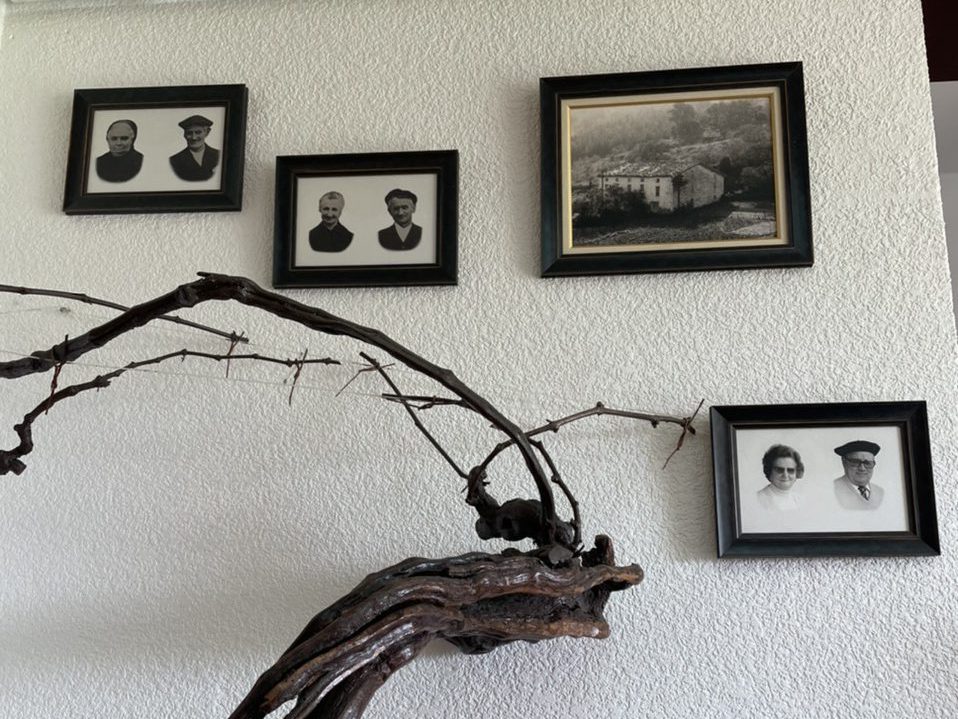
As we stepped into the building, the first thing I noticed was the bright light coming in from a circular window that made the rows of grapes visible on the hill. It was beautiful. The inside was nicely decorated and the natural wood made everything so picturesque. We stood in the entryway for a little while and we were told about some of the history behind this winery. I learned that the Txakoli they make has to follow specific guidelines from the Denomination of Origin (DO). This ensures that the wine is made from their area in the Basque Country. This winery, established in 1992, was the first winery exclusive for Txakoli making. The winery comprises 12 hectares of vineyards. Harvest season begins in late September/early October when all the grapes are collected in large wine crates. The process of making the wine then continues through November. Now you may be thinking, 12 hectares? They must have lots of people working to get it all done. I was surprised to learn that this is not the case! During the off season, only 4 people work at the vineyard including the two sisters. During harvest, they hire 14 part time employees just to help with the picking of the grapes and transferring. For the amount of work that goes into the wine making process, I couldn’t believe the small amount of employees they had. This information only emphasizes the dedication and pride that the family has in their wine. The daughter mentioned that although it is hard work, she loves doing it.
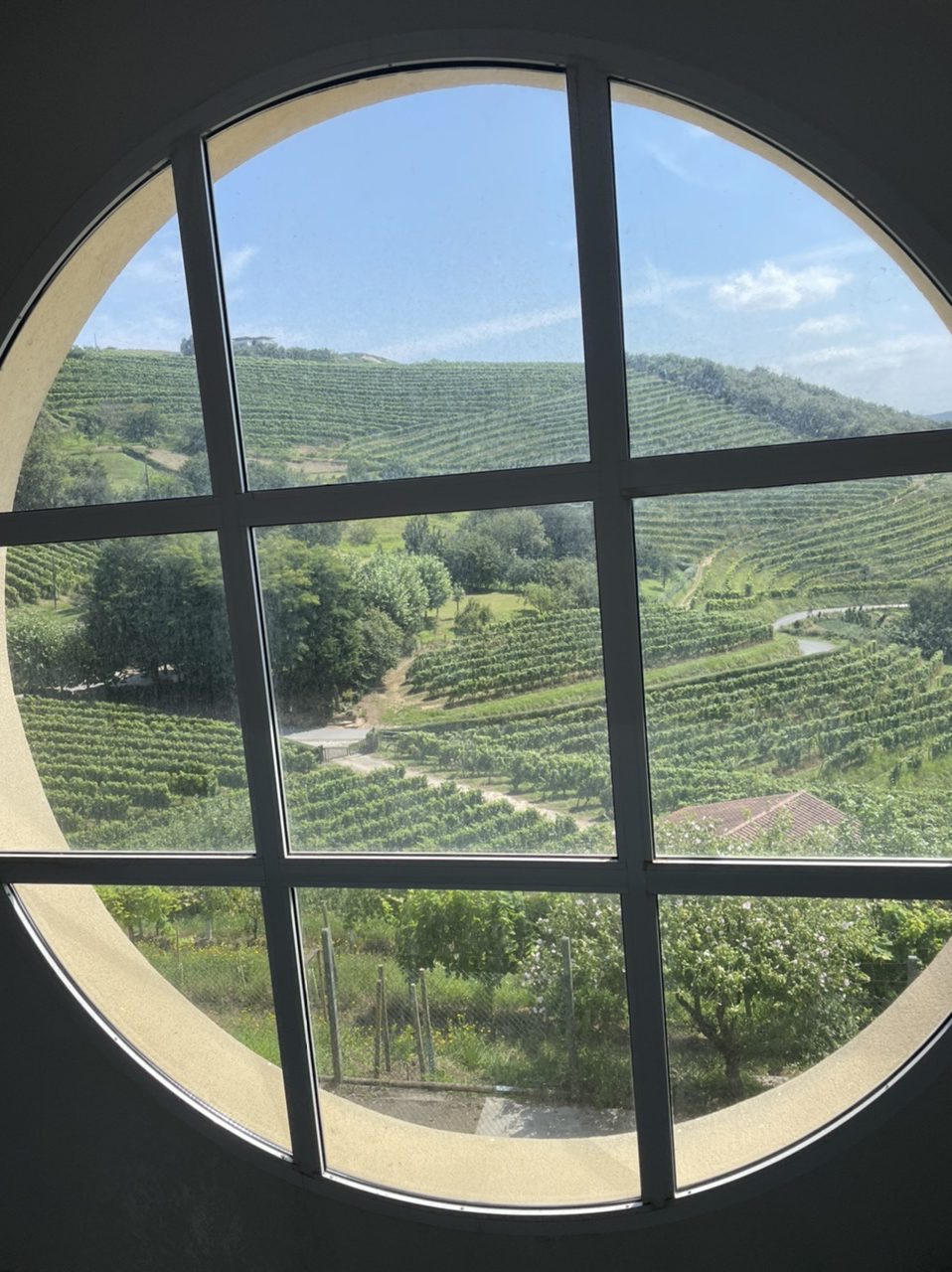
We were then directed downstairs to where the magic happens. Once the grapes are collected they are transferred back to the building via truck. The grapes are then poured down a long chute in a machine that washes the grape and removes unwanted parts. The grapes then go through an air pneumatic press and the juice is collected underneath. This is then used to make their famous Txakoli. The parts that were removed are sent and used to make Grappa. The press they use is about 30 years old! But because it only takes about 3 weeks to make all the wine, the press is able to withstand many years. Once the juice is collected it is moved into two large barrels where it sits at 10 degrees for 24 hours to be cleaned and filtered. This juice is then transferred into the rest of the barrels where it can ferment. The temperature is raised to 18 degrees and the yeast on the skin of the grape breaks down the sugar, releasing carbon dioxide. Fermentation takes about 15 days at first, but after that the rest of the wine only takes a few days. This is because the yeast from the first batch actually remains in the air and spreads to the other barrels speeding up the process. Kind of like how a COVID outbreak may work! During the last weeks of making the Txakoli, the cover on the top of the barrel is shut so some of the carbonation can remain in the wine. This is then sent to be cleaned one last time, bottled, and labeled with the DO.
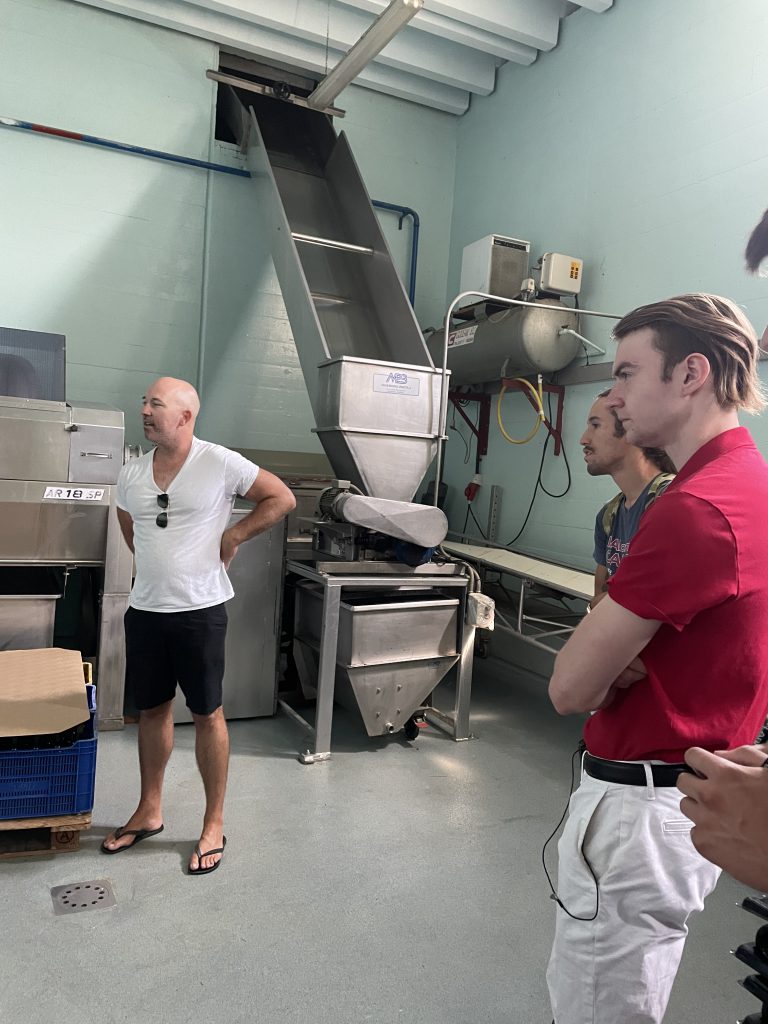
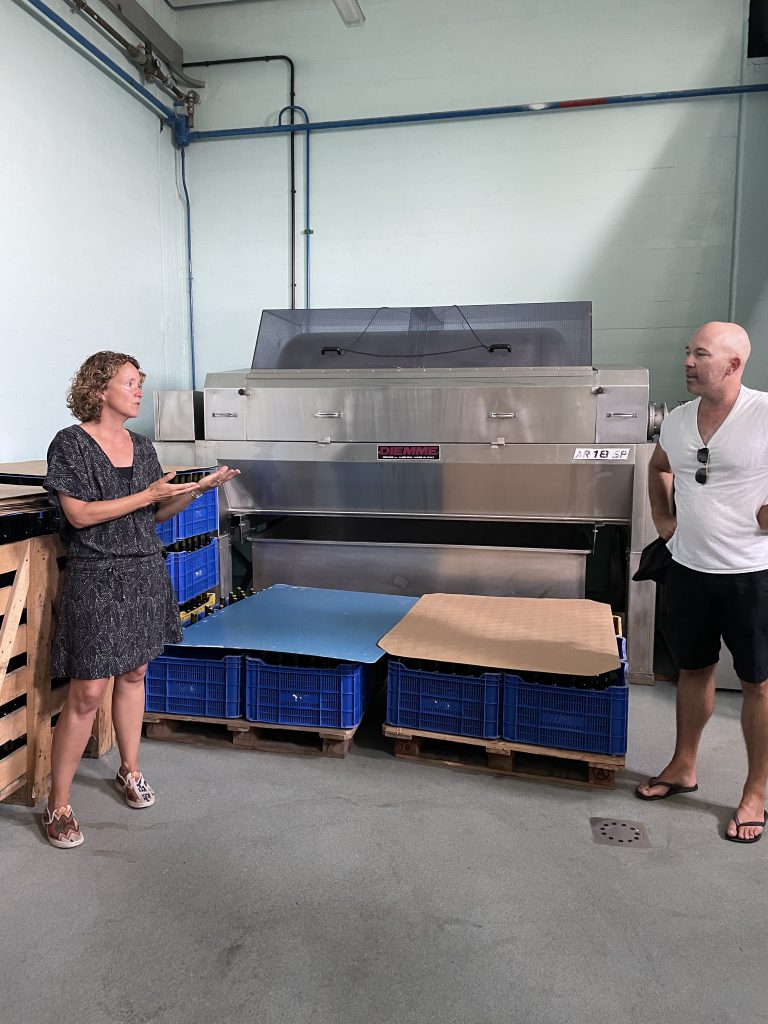
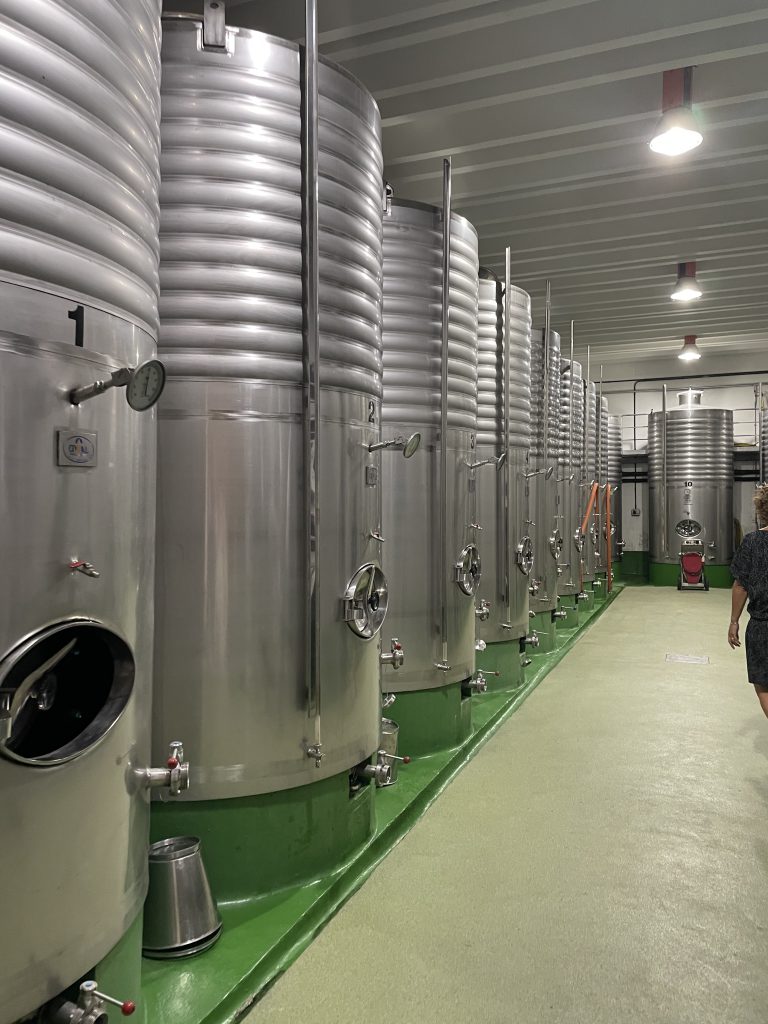
One of the most fascinating things I learned about this winery is their lack of pesticide use. The family strives to only use natural processes and methods when producing their wine. So instead of having pesticides and products to keep the vineyard safe, they use sheep! One obstacle that the family encounters is the humidity and fungus that can grow on the vines. Because sheep won’t eat unripe grapes, but they will eat leaves, they are the perfect solution! The sheep roam through the vineyard and eat the leaves, which allows for ventilation and stopping the fungus.
After our tour of the wine-making process, we were brought upstairs to the deck. I was aware this place was beautiful, but the pictures never do it justice. It was breathtaking to see the hills covered in vines, perfectly spaced in between with horses seen from afar. This created the perfect backdrop for us all to take some “insta-worthy” photos while we got to taste the Txakoli and eat some locally produced food!
Although we had a sneak peek of the Txakoli during our pintxo tasting, we got the real experience right at its origin. The wine was unlike anything I have had before. You could taste the slight sparkle of the wine due to the carbonation that I mentioned above. The wine paired so well with the bread and cheese making for a delicious afternoon treat. The wine definitely tastes better when you can understand all the work that goes into it… and of course with that unforgettable view!
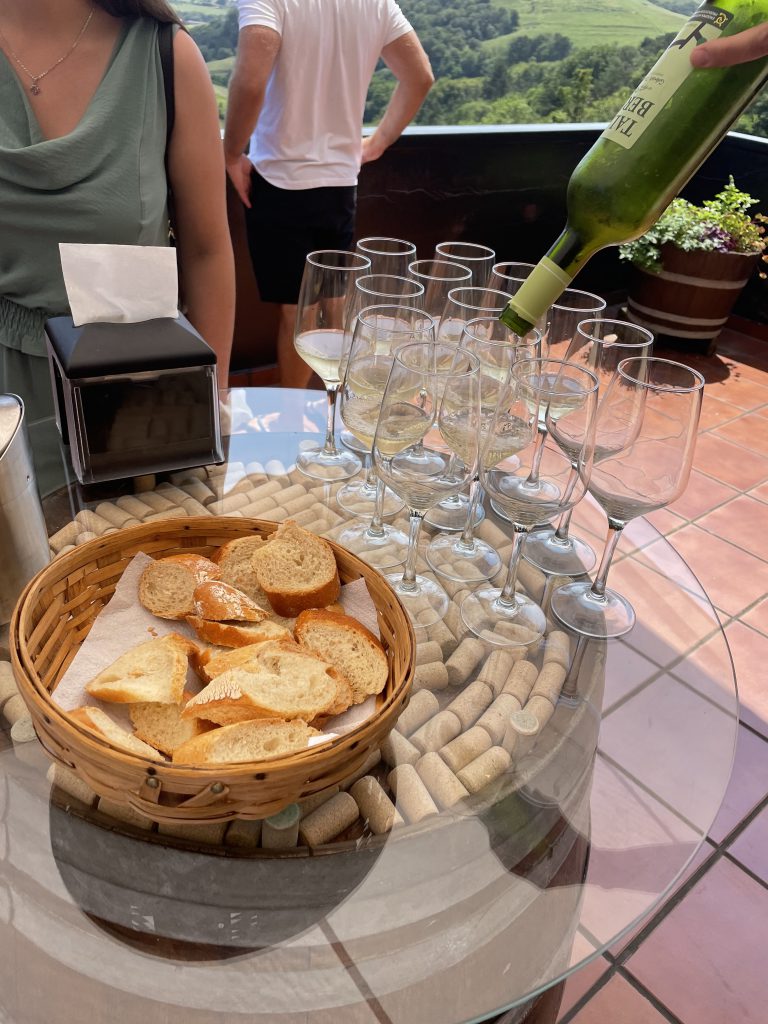
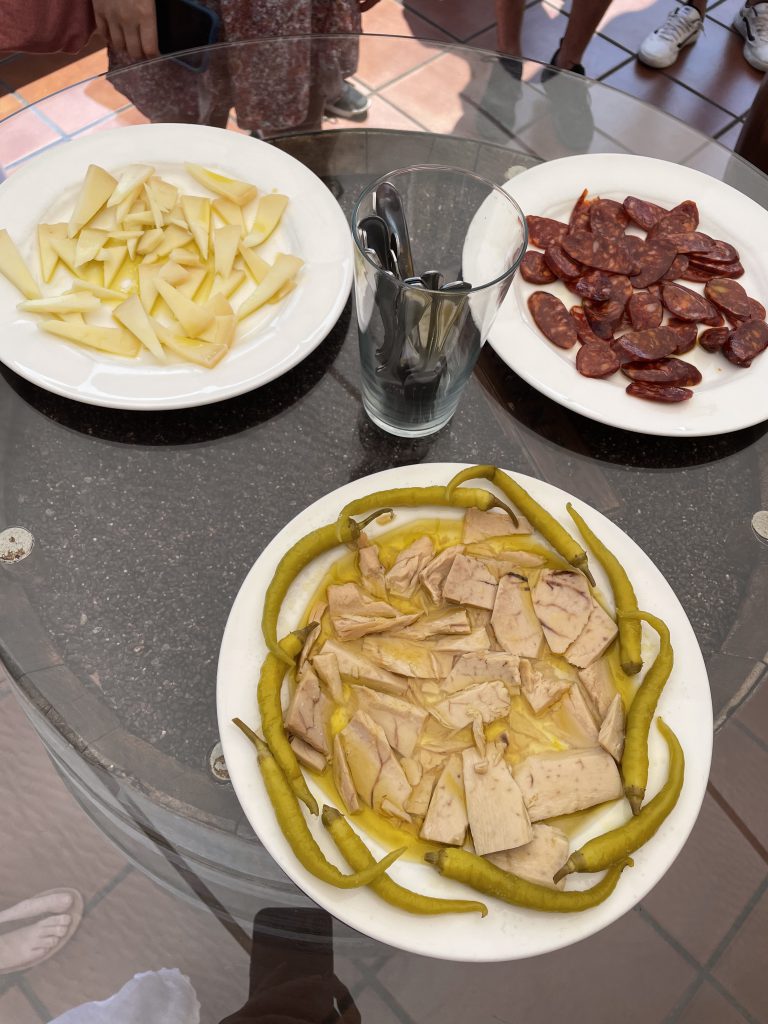


After we got back from the tour, a few of us took a nap on Ondaretta Beach, soaking in the sun. I don’t think I will ever get used to the view we have from the water, it’s incredible. This first week here has been a lot of firsts for me: first pintxo, first anchovy, first olive, first time learning the Basque language, and first wine tasting. I already have so much to be grateful for on this trip, but I think the opportunity to grow and try new things tops the list. I am so excited for the next two weeks and I know saying goodbye to this place will be hard.
